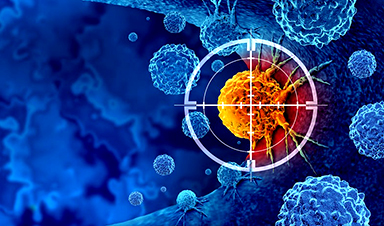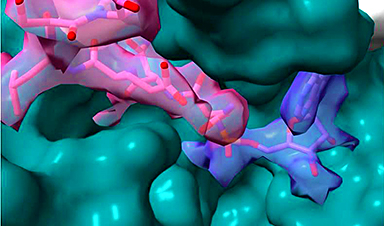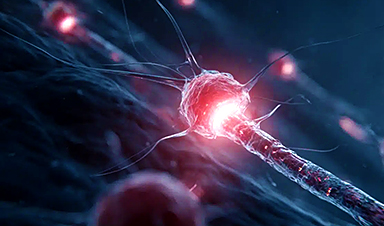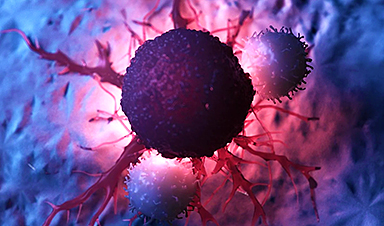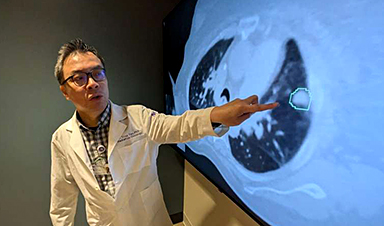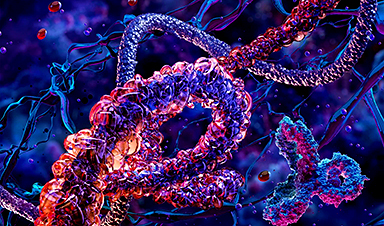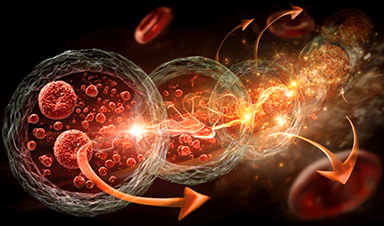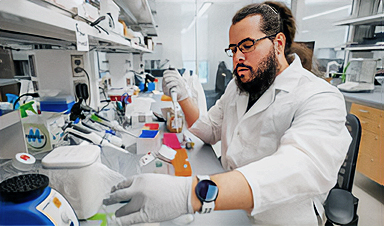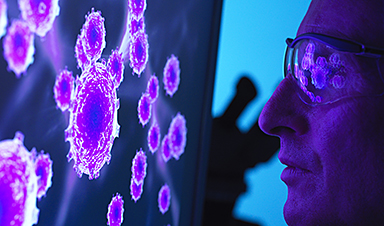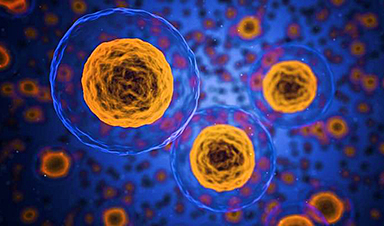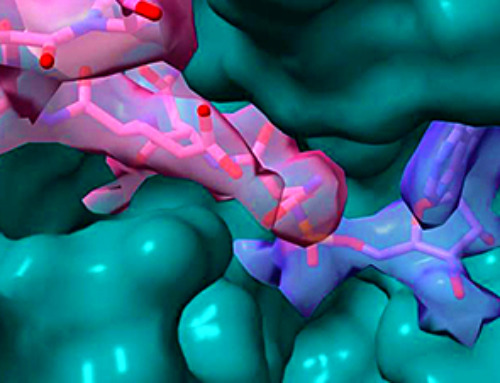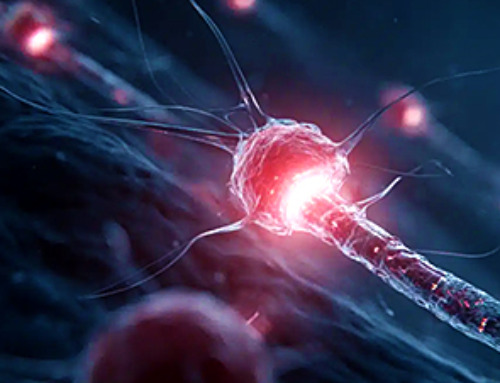Researchers from the University of Bern, Inselspital, University Hospital Bern, and the University of Connecticut have made a significant breakthrough in the fight against cancer. They identified a previously unknown weak point of prostate cancer cells. This could also lead to entirely new therapeutic approaches for other types of cancer.
Prostate cancer is the most common non-skin cancer in men worldwide. According to international estimates about one in six men will get prostate cancer during their lifetime and worldwide, over 375’000 patients will die from it each year. Tumor resistance to current therapies plays an essential role in this and new approaches are therefore urgently needed. Now an international research team from the University of Bern, Inselspital Bern and the University of Connecticut (USA) has identified a previously unknown weak spot in prostate cancer cells. This weak spot is possibly also present in other cancer cells. The study was led by Mark Rubin from the Department for Biomedical Research (DBMR) and Center for Precision Medicine (BCPM) at the University of Bern and Inselspital Bern, and Rahul Kanadia from the Department of Physiology and Neurobiology and the Institute for Systems Genomics at the University of Connecticut. The research results have now been published in the journal Molecular Cell.
Previously unknown driver of prostate cancer identified
“We took a closer look at a certain molecular machine called the spliceosome”, explains Anke Augspach, lead author of the study and researcher from the Department for BioMedical Research (DBMR). “It plays an important role in the translation of genes into proteins. In this process, the spliceosome separates parts of the gene that are not needed for the production of the protein and fuses the other parts.”
While almost all genes undergo this process in the so-called major spliceosome, the minor spliceosome is used in less than one percent of genes. “Nevertheless, the minor spliceosome is enormously important because it particularly processes genes that play a crucial role in cell growth. And it is this cell growth that gets out of control in cancer – but the precise mechanism behind this remained unclear”, explains Rahul Kanadia, study co-author from the Physiology and Neurobiology Department and the Institute for Systems Genomics at the University of Connecticut.
In their investigations, the team found various indications for the central role of the minor spliceosome in cancer. “We were able to show that a specific component of the minor spliceosome is significantly increased in advanced prostate cancer”, explains study co-author Mark Rubin of the Department for BioMedical Research (DBMR) and Bern Center for Precision Medicine (BCPM). This led the researchers to suspect that cancer cells activate the minor spliceosome through this component and thus stimulate uncontrolled cell growth.
An entirely new approach to cancer therapies
The researchers were able to confirm their assumption with the help of laboratory test models such as 2D cell cultures and organoids – miniature organs that are grown in the laboratory based on patient samples. They were also able to show that inhibiting the specific component led to a greater reduction in the growth of prostate cancer than current standard therapies. “Accordingly, blocking this process should hold therapeutic potential.”, Mark Rubin says. “This is the target that that we were hunting”. Rahul Kanadia adds that “The blocking leads to a decrease in cancer growth without affecting the growth and survival of normal cells.” “This discovery is a game changer in developing more effective and targeted combination therapies for cancers such as prostate cancer and other types of cancer. We want to work on this in the coming years – and have already applied for the corresponding patent”, Rubin concludes.
Research supported with 1 million dollars
The research results come from a project supported by the US Prostate Cancer Foundation (PCF) with the Igor Tulchinsky-Leerom Segal-PCF Challenge Award 2022. The foundation funds interdisciplinary projects that pursue promising approaches to combat recurrent or advanced prostate cancer. The award is endowed with 1 million dollars. “We commend the research team on their achievement and proudly support their work to bring us closer to our mission to eliminate death and suffering from prostate cancer”, says Howard R. Soule, Executive Vice President and Chief Science Officer of the PCF.
News
Scientists Are Pretty Close to Replicating the First Thing That Ever Lived
For 400 million years, a leading hypothesis claims, Earth was an “RNA World,” meaning that life must’ve first replicated from RNA before the arrival of proteins and DNA. Unfortunately, scientists have failed to find [...]
Why ‘Peniaphobia’ Is Exploding Among Young People (And Why We Should Be Concerned)
An insidious illness is taking hold among a growing proportion of young people. Little known to the general public, peniaphobia—the fear of becoming poor—is gaining ground among teens and young adults. Discover the causes [...]
Team finds flawed data in recent study relevant to coronavirus antiviral development
The COVID pandemic illustrated how urgently we need antiviral medications capable of treating coronavirus infections. To aid this effort, researchers quickly homed in on part of SARS-CoV-2's molecular structure known as the NiRAN domain—an [...]
Drug-Coated Neural Implants Reduce Immune Rejection
Summary: A new study shows that coating neural prosthetic implants with the anti-inflammatory drug dexamethasone helps reduce the body’s immune response and scar tissue formation. This strategy enhances the long-term performance and stability of electrodes [...]
Scientists discover cancer-fighting bacteria that ‘soak up’ forever chemicals in the body
A family of healthy bacteria may help 'soak up' toxic forever chemicals in the body, warding off their cancerous effects. Forever chemicals, also known as PFAS (per- and polyfluoroalkyl substances), are toxic chemicals that [...]
Johns Hopkins Researchers Uncover a New Way To Kill Cancer Cells
A new study reveals that blocking ribosomal RNA production rewires cancer cell behavior and could help treat genetically unstable tumors. Researchers at the Johns Hopkins Kimmel Cancer Center and the Department of Radiation Oncology and Molecular [...]
AI matches doctors in mapping lung tumors for radiation therapy
In radiation therapy, precision can save lives. Oncologists must carefully map the size and location of a tumor before delivering high-dose radiation to destroy cancer cells while sparing healthy tissue. But this process, called [...]
Scientists Finally “See” Key Protein That Controls Inflammation
Researchers used advanced microscopy to uncover important protein structures. For the first time, two important protein structures in the human body are being visualized, thanks in part to cutting-edge technology at the University of [...]
AI tool detects 9 types of dementia from a single brain scan
Mayo Clinic researchers have developed a new artificial intelligence (AI) tool that helps clinicians identify brain activity patterns linked to nine types of dementia, including Alzheimer's disease, using a single, widely available scan—a transformative [...]
Is plastic packaging putting more than just food on your plate?
New research reveals that common food packaging and utensils can shed microscopic plastics into our food, prompting urgent calls for stricter testing and updated regulations to protect public health. Beyond microplastics: The analysis intentionally [...]
Aging Spreads Through the Bloodstream
Summary: New research reveals that aging isn’t just a local cellular process—it can spread throughout the body via the bloodstream. A redox-sensitive protein called ReHMGB1, secreted by senescent cells, was found to trigger aging features [...]
AI and nanomedicine find rare biomarkers for prostrate cancer and atherosclerosis
Imagine a stadium packed with 75,000 fans, all wearing green and white jerseys—except one person in a solid green shirt. Finding that person would be tough. That's how hard it is for scientists to [...]
Are Pesticides Breeding the Next Pandemic? Experts Warn of Fungal Superbugs
Fungicides used in agriculture have been linked to an increase in resistance to antifungal drugs in both humans and animals. Fungal infections are on the rise, and two UC Davis infectious disease experts, Dr. George Thompson [...]
Scientists Crack the 500-Million-Year-Old Code That Controls Your Immune System
A collaborative team from Penn Medicine and Penn Engineering has uncovered the mathematical principles behind a 500-million-year-old protein network that determines whether foreign materials are recognized as friend or foe. How does your body [...]
Team discovers how tiny parts of cells stay organized, new insights for blocking cancer growth
A team of international researchers led by scientists at City of Hope provides the most thorough account yet of an elusive target for cancer treatment. Published in Science Advances, the study suggests a complex signaling [...]
Nanomaterials in Ophthalmology: A Review
Eye diseases are becoming more common. In 2020, over 250 million people had mild vision problems, and 295 million experienced moderate to severe ocular conditions. In response, researchers are turning to nanotechnology and nanomaterials—tools that are transforming [...]
